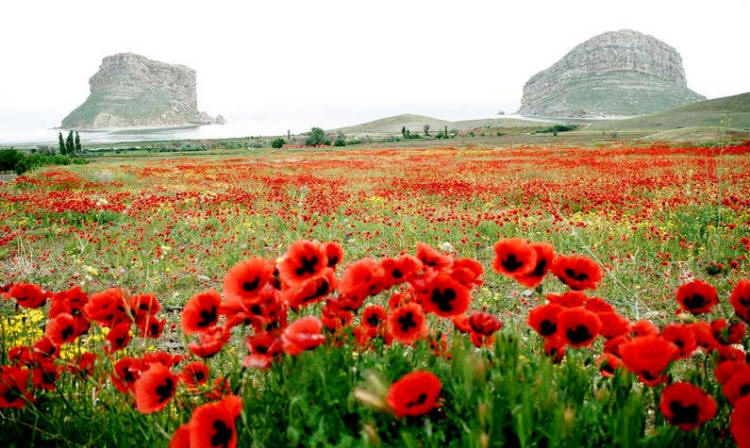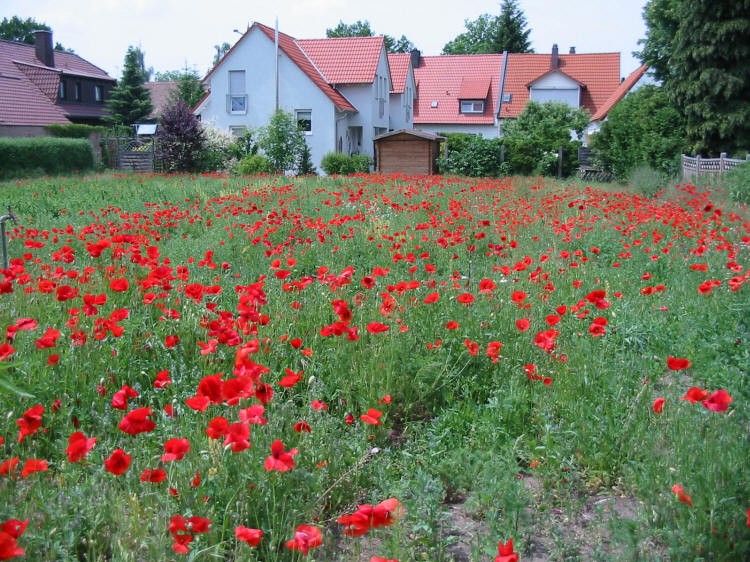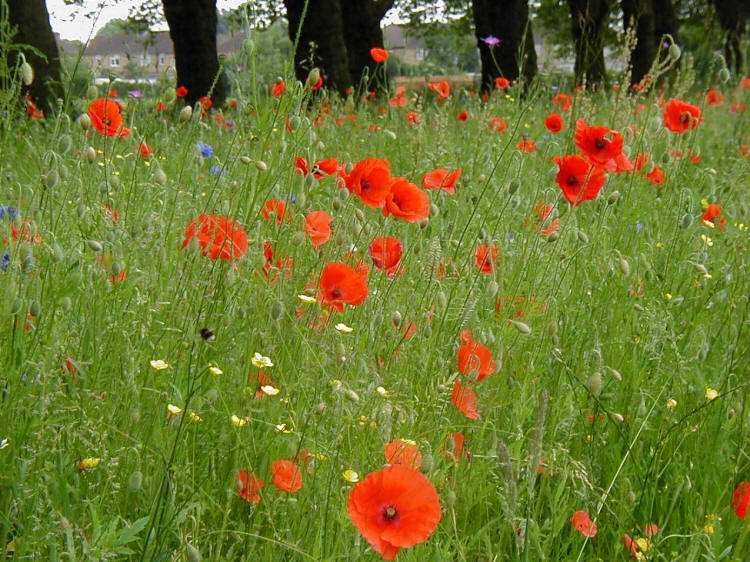The Red Poppy
Poppies have long been used as a symbol of both sleep and death: sleep because of the opium extracted from them, and death because of their (commonly) blood-red color. In Greco-Roman myths, poppies were used as offerings to the dead. Poppies are used as emblems on tombstones to symbolize eternal sleep. This aspect was used, fictionally, in The Wonderful Wizard of Oz to create magical poppy fields, dangerous because they caused those who passed through them to sleep forever.
Did You Know? - A second meaning for the depiction and use of poppies in Greco-Roman myths is the symbolism of the bright scarlet colour as signifying the promise of resurrection after death.
The poppy of wartime remembrance is the red corn poppy, Papaver rhoeas. This poppy is a common weed in Europe and is found in many locations, including Flanders Fields. This is because the corn poppy was one of the only plants that grew on the battlefield. It thrives in disturbed soil, which was abundant on the battlefield due to intensive shelling. During the few weeks the plant blossomed, the battlefield was colored blood red, not just from the red flower that grew in great numbers but also from the actual blood of the dead soldiers that lay scattered and untended to on the otherwise barren battlegrounds. Thus the plant became a symbol for the dead World War I soldiers.
Did You Know? -
It is known to have been associated with agriculture in the Old World since early times. It has most of the characteristics of a successful weed of agriculture. These include an annual lifecycle that fits into that of most cereals, a tolerance of simple weed control methods, the ability to flower and seed itself before the crop is harvested. Like many such weeds, it also shows the tendency to become a crop in its own right; its seed is a moderately useful commodity, and its flower is edible[citation needed].
Its origin is not known for certain. As with many such plants, the area of origin is often ascribed by Americans to Europe, and by northern Europeans to southern Europe. The European Garden Flora suggests that it is ‘Eurasia and North Africa’; in other words, the lands where agriculture has been practiced since the earliest times.
The leaves are mildly poisonous to grazing animals. The seed is harmless and is used sometimes as a condiment. The commonly grown decorative Shirley Poppy is derived from forms of this plant. The commonly used parts of the corn poppy are the seeds (in baking), the fresh green parts as vegetable, and the red petals by making syrups and alcoholic/non-alcoholic drinks. Red poppy syrup is a traditional beverage of Mediterranean regions like Bozcaada.
Did You Know? -
It has become associated with wartime remembrance in the 20th century, especially during Remembrance Day in Commonwealth countries. As poppies bloomed in much of the western front in World War I, poppies are a symbol of military veterans, especially of that war.
Since the poppy symbol is largely associated with Remembrance Day in Canada, the Canadian Mint has released a series of quarters into circulation that have the poppy imprinted on them in the center of the coin.



